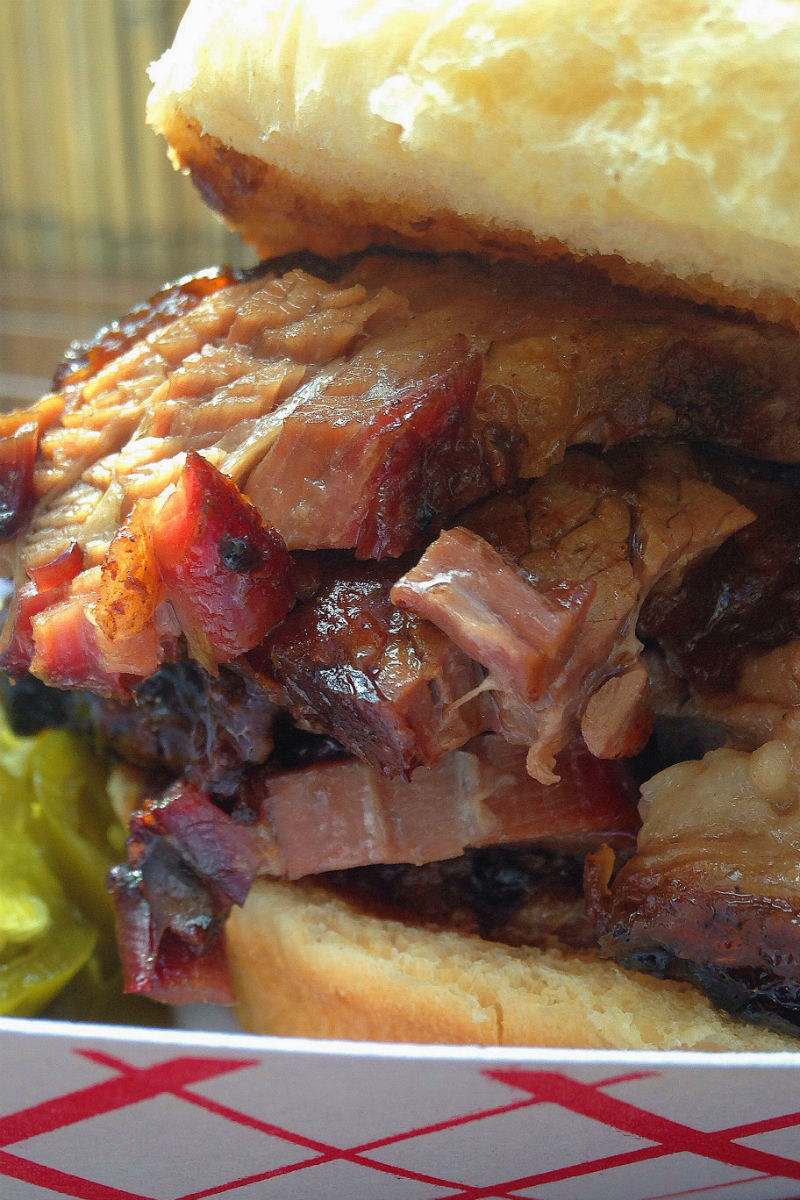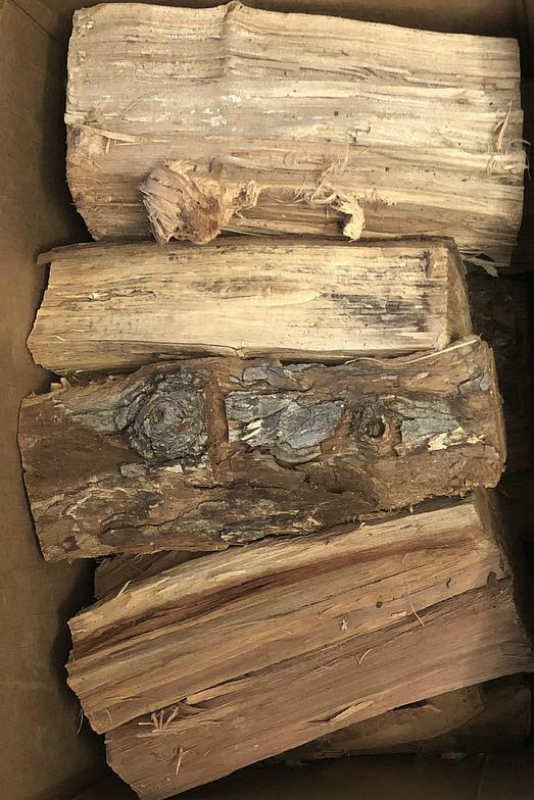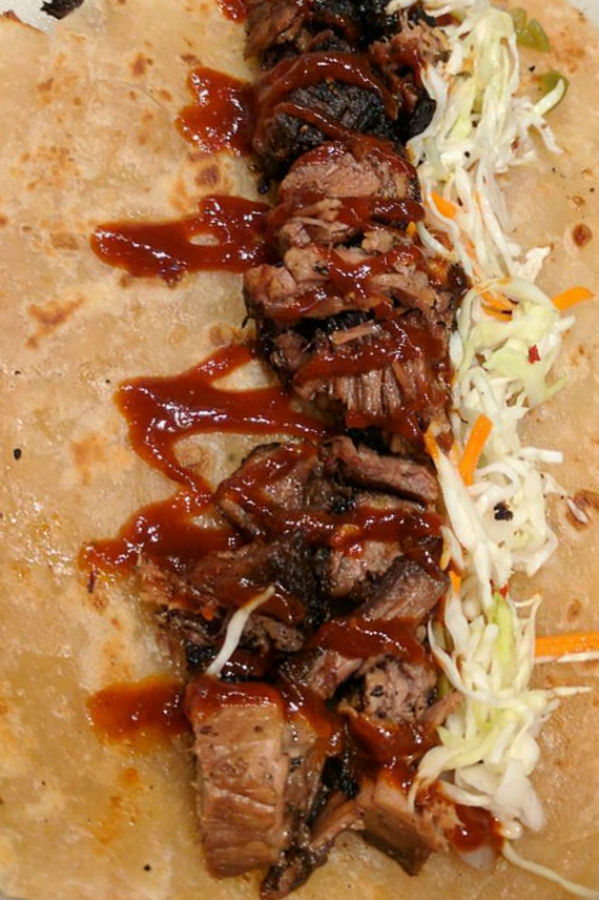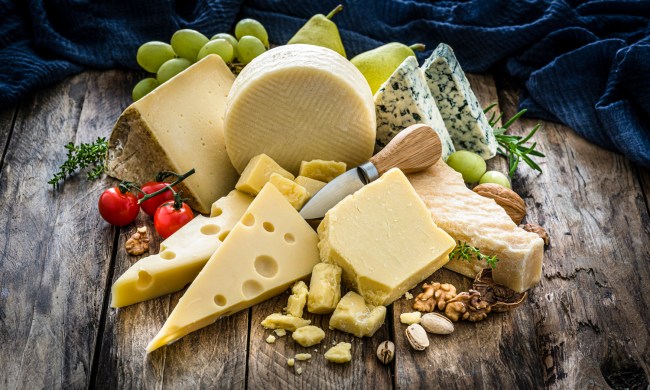No one can argue that smoked meat is one of the great joys in life. If someone does, immediately unfriend them — they are not worthy of your time. Kidding, but only kind of. And while we love all pieces of smoked meat, from sausages to ribs and beyond, there’s something truly special about biting into a perfect piece of brisket, with its pink smoke ring, flavorful bark, and juicy meat that is just the right texture. While we’ve cooked many briskets in the oven in our day, smoked brisket is a much bigger undertaking, especially if you’re new to the backyard barbecue game.
New York City barbecue has been coming into its own during the past decade, which can be seen in the city’s many meaty festivals that take place every year. (Don’t believe us? Check out this episode of Beards, Booze, and Bacon with Arrogant Swine’s Tyson Ho.) One such event, Brisket King NYC, which has been going on for over ten years and draws pitmasters from near and far to compete for the best brisket in the city. This year, top pitmasters will be throwing down for the title on April 26, 2023, in what is sure to be a meat-tastic day.

We sat down with two of those pitmasters Jared Male, restaurant consultant and former pitmaster of Randall’s Barbecue in New York’s Lower East Side neighborhood, and Ash Fulk, chef and pitmaster of Hill Country Barbecue Market. We wanted to know what they do to make delicious brisket and how we could replicate it at home. So, pick up a brisket roast — we suggest from Omaha Steaks — and learn the secrets to a flavorful meal.
Make sure the smoker is actually hot
Preheating your smoker is more important than you think for achieving a perfectly cooked brisket. In fact, if you neglect this step and put the brisket in too soon, it could critically affect your results. “It’s just like preheating an oven,” Fulk says. “Those first few hours are crucial, and we know brisket thrives in a smoky environment, so give the brisket what it wants! You sometimes hear the phrase ‘over smoked,’ and this usually refers to an acrid taste to the brisket. This does not come from too much smoke, but it usually comes from green wood or not having enough oxygen in your smoker.”
Keep your rub simple
“A rub is not an excuse to empty out your spice rack!” Fulk says. “Brisket is a long cook, and it is going to take on a ton of flavor from the smoke. I like salt, pepper, and a touch of cayenne.”

Of course, you should feel free to experiment with your own spice blends, but be mindful of the combination and remember that you want the meat to shine. Whatever you decide to use, Fulk suggests rubbing your brisket the night before you cook so the salt has time to really soak in.
Touch is more important than temperature
Everyone who cooks meat often should invest in a quality meat thermometer to help them know when it’s ready to come off the fire. But you shouldn’t rely solely on this tool to gauge doneness. “Use temperature as a guideline, but rely on the way the brisket feels,” Male says. “Touch is really important when I cook, so I generally start feeling the briskets once they hit about 185 [degrees Fahrenheit].”
You’re never going to buy two hunks of brisket that are exactly alike, so you need to treat each one differently as you cook it. “I’ve pulled briskets off the smoker at 190 [degrees Fahrenheit], while others weren’t ready until they reached 200,” Male adds. “Each one cooks a little different, and the window of opportunity between undercooked and mush is small.”
Rest your brisket before you slice
After waiting patiently while your brisket smokes for hours, we know it’s tempting to dive in right away. But cutting into that big hunk of meat immediately after it comes off the heat is going to ruin all of your hard work.

“Rest your briskets,” Male says. “If you slice your brisket open while it is too hot, all of those connective tissues and fats that liquefy during the cooking process will rush straight out of the meat. Allow it to cool, giving the collagen time to thicken and stay inside the brisket, keeping the meat moist.”
On the other hand, if there are a couple of hours between the end of cooking and your brisket feast, there are steps you can take to ensure the meat stays juicy. “Wrap your briskets in butcher paper if you will be holding it for a while,” Male says. “The butcher paper will soak up grease from the brisket, forming a protective layer that helps keep the bark from drying out.”
Don’t be afraid to make mistakes
Brisket is a big piece of meat that some of these guys have been cooking for more than a decade. If you don’t get it right the first time, not all is lost. Learn from your mishaps, and you’ll be cooking like a pro in no time.
“Don’t be afraid to make lots of mistakes,” Male says. “I find it to be one of the best ways to learn. Ran the smoker too hot on a cook? Learn to maintain the fire at a lower temperature. Find the brisket has an unpleasant acrid taste after using a certain wood? Balance it out with a lighter wood on your next cook, or use a different variety altogether. Too salty? Balance it with pepper and other spices next time.”
Fulk even suggests keeping a brisket diary that you can reference before and during each cook. “Note the process you use as you cook it: time, temp, wrapping, not wrapping, when you open the door, etc,” he says. “Then note the result of the cook through the taste.”
Practice love and patience
It doesn’t matter how perfect your meat is or how many times you’ve cooked brisket before, if you go into the smoking process with a rushed state of mind, it won’t turn out as good as it can be. “Cooking brisket is not hard, but cooking great brisket is hard,” Fulk says. “Before you start, find peace of mind; be present and ready to nurse your brisket through the process. You must pay attention to the heat, smoke, temperature, and placement. It is in a thousand little things that takes your brisket from good to great.”







